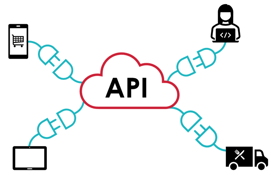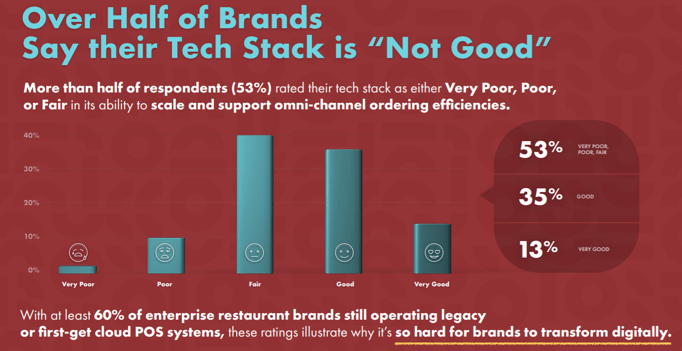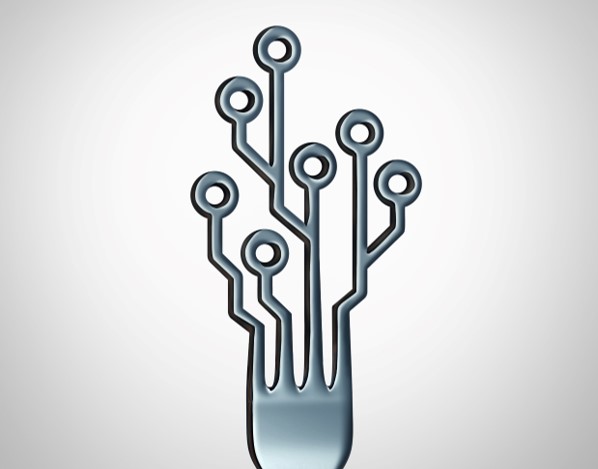If there’s anything that this “new normal” has taught us, it’s the importance of connections. Physical or virtual, tangible or intangible, it’s their absence that serves to illustrate just how important they are.
One type of connection that has become vital--although not necessarily front of mind for most of us--is the technological connective tissue that powers your ability to order takeout, get directions to a restaurant, and pay for your food: APIs, or Application Program Interfaces.
If you're a restaurateur, the role APIs play when it comes to taking orders, making food, and delighting guests has only continued to increase with digital transformation needs. In this first post of our API series, we'll demonstrate their importance by taking a look at:
- The Rise of APIs & difference between SOAP and REST
- Adopting an API-First Approach
- How they’ll become even more important in the future
The Significance & Rise of APIs
If you’re not familiar with APIs, let’s start with a simple definition: they’re essentially a software-to-software interface that lets two different applications exchange data and communicate with each other, much like subway trains connecting two different routes. Though they’ve been around since the beginning of computing, the web-based APIs that we commonly use today came to be in the late 90s and early 2000s.

It was during the early days of the internet that service-oriented architectures were heavily used (and favored) for network development, which led to creation of the Simple Object Access Protocol (SOAP). SOAP is essentially the set of rules that govern the communication and transmission of data between different entities, and was the de facto protocol used when APIs started to become commonly used.
Since then, Representational State Transfer ("REST APIs") have become more prevalent and useful for web- or network-enabled services and applications, due to several advantages over SOAP APIs; namely: simplicity, optimization for the web, and high levels of performance and scalability.
Coupled with the Internet's meteoric rise in the 90s, the usage of APIs proliferated due to:
- Decentralized, network-reliant computing models
- The development of “as-a-service” as a ubiquitous software delivery model
- Increased variety and diversity of applications for different business functions and needs
>> APIs are vital to pretty much every industry, but they’ve become especially important within the restaurant space, due to the inherent complexity of restaurant technology ecosystems, and the increased number of different clients, endpoints, channels, and applications.
Direct integrations require much more development effort and time, which has led to APIs becoming the preferred method to facilitate interchange between applications.
APIs can almost be regarded as the express train of the development world, as they simplify and shorten connections between programs, applications, and clients.
However, that doesn’t mean that all APIs are created equal. Lighter, forward-looking architectures capitalize upon REST APIs, which--in contrast to legacy POS systems--provide restaurants with the flexibility to quickly integrate new functionality, facilitate faster data transfer and support the high level of operational demands placed on modern restaurant technology stacks.
Adopt an API-Forward Approach (Fast!)
Restaurants are increasingly reliant upon technology to ensure relevance. But as recent market forces have illustrated, not all tech stacks are up to the challenge of keeping pace with fast-evolving guest demands and the need for digital transformation. Too often, legacy point-of-sale systems act as barriers to growth and agility, rather than enabling responsiveness and the ability to quickly enact change.

Source: 2021 State of Digital for Restaurants
An API-forward approach can truly act as an accelerator for restaurants, and a real advantage for enterprise brands -- and not just from a technical perspective. While reduction in development and integration may result in tangible cost and time savings, the benefits realized from implementing a modern API approach go far beyond that:
- Guest engagement: Ease of integration and open APIs can transform your technology stack from a simple facilitator of orders and transactions into a platform that drives revenue, loyalty, and actionable guest insights.
- Operations: In addition to tighter alignment between front and back of house, an API-led architecture helps optimize many operational elements of your business, from accounting, labor management and inventory to (perhaps most importantly) clean, normalized data transfer between departments and applications.
- IT: With an API-first approach, IT teams can shift focus from simply managing technology and POS infrastructure to quickly implementing new technologies and optimizing performance of ordering and production applications. While delivering on your core promise - great food and guest experiences.
It’s obvious that APIs form an integral part of a robust, modern technology stack - but simply being able to handle the needs of today’s restaurants just won’t cut it anymore. With new technologies constantly under development, brands need to be able to quickly integrate new functionality, drive efficient data flow through their systems, and ensure a top-notch guest experience.
Invest in Your Future with APIs
When it comes to what’s next, APIs can help brands keep an eye firmly fixed on the future. Other than accelerating the shift to digital, the pandemic has made it starkly clear that the ability to react quickly to change isn’t just a differentiator, but necessary for restaurants to succeed.

Shifting to a digital-first mindset is just one benefit that a flexible, nimble technology stack can provide. For established brands, an API-first model can also help restaurants:
- Incorporate new ordering channels in support of rising preferences for takeout and delivery, like voice and virtual assistants (not to mention delivery and third-party marketplaces)
- Better understand current customers and attract new ones, through the normalization and deployment of data
- Rapidly deploy new operating models and revenue streams, like cloud kitchens and virtual brands
- Streamline bloated technology stacks to reduce complexity and drive greater efficiencies within and across organizations
- Enhance operations through unique architectures that support stability and high levels of redundancy
It should be clear by now that APIs play a pivotal role within an industry whose success is truly governed by the effective adoption and rapid deployment of technology, much of which is enabled by Application Program Interfaces.
Qu recognized the importance of an API-led architecture and has since developed a truly unique, differentiated restaurant technology platform that extends tangible benefits across the entirety of a brand’s operations, from the preparation and delivery of food to the overall management of an enterprise technology stack at the executive level. This approach allows restaurants to succeed in an industry that is increasingly reliant on the connections that APIs facilitate, no matter what function they support.
Read the next article in our full Restaurant API blog series here.






